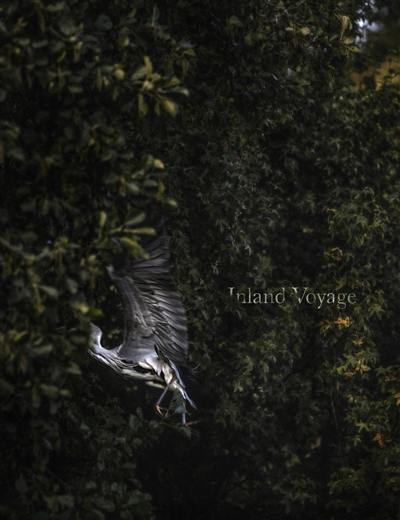
Paru le 08/11/2022 | Relié
Tout public
photographies de Quentin Pruvost | postfaces de Hervé Leroy et Jean-Philippe Mailliez
Inland Voyage est un ouvrage d'ouverture, de quête vers l'inconnu. Il explore L'œuvre de l'écrivain écossais Robert Louis Stevenson qui a voyagé en canoë sur les rivières de la Sambre et de l'Oise.
Les premières pages du livre nous font glisser doucement au fil de l'eau, longer les forêts et les vestiges industriels.
Les photographies de Quentin Pruvost, parti sur les traces de l'écrivain, révèlent des personnages étonnants, des illusions, des souvenirs d'aventures possibles dans les paysages. Au milieu du livre, apparait le temps du rêve. Les images des rivières dérivent vers le conte. La troisième partie met à découvert des apparitions mystérieuses et des paréidolies saisies par Quentin Pruvost, comme s'il côtoyait l'esprit créatif de Stevenson entre les songes et le monde physique. Le livre finit sa course avec les postfaces inspirantes d'Hervé Leroy et Jean-Philippe Mailliez.
Inland Voyage is a story based on openness, on a quest towards the unknown. It explores the work of Scottish writer Robert Louis Stevenson who traveled by canoe on the Sambre and Oise rivers.
The first pages of the book make us skim the water, along the forests and the industrial remains.
Quentin Pruvost's photographs, following the footsteps of the writer, reveal astonishing characters, illusions, memories of possible adventures in the landscapes. In the middle of the book, the time of dream appears, The images of the rivers drift towards the tale. The third part uncovers mysterious apparitions and pareidolia captured by Quentin Pruvost, as if he rubbed shoulders with Stevenson's creative spirit on the thread between dreams and the material world. In the end, the book comes to rest among the inspiring afterwords of Hervé Leroy and Jean-Philippe Mailliez.